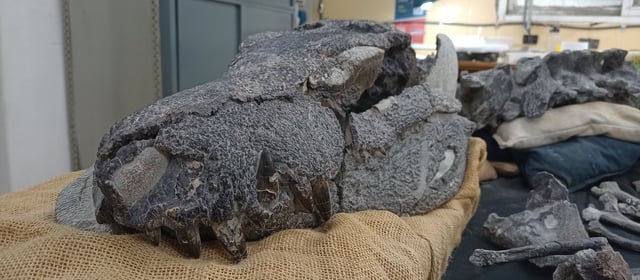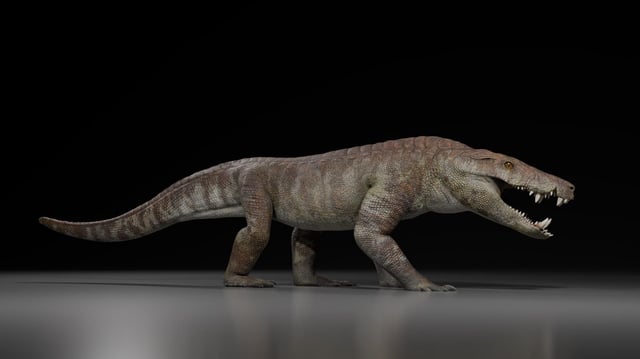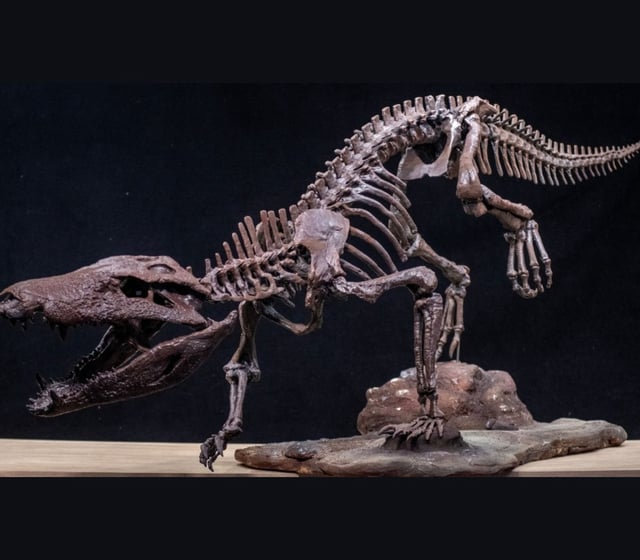Overview
- An international team led by Argentine paleontologists Fernando Novas and Diego Pol published the formal description in PLOS One, with collaborators from Japan and other countries.
- The fossil, found in 2020 at Estancia Anita near El Calafate and preserved in a rock concretion, includes a nearly complete skull, mandibles and much of the skeleton.
- Kostensuchus atrox is the first crocodiliform reported from the Chorrillo Formation and the second-largest predator known from that Maastrichtian ecosystem.
- Measurements and anatomy indicate a skull near 50 cm and a body exceeding 3 m, with estimates up to about 3.5 m and roughly 250 kg.
- A short, broad snout, more than 50 serrated teeth and powerful jaw musculature support an interpretation of active terrestrial or semi‑aquatic predation, including medium-sized dinosaurs.



